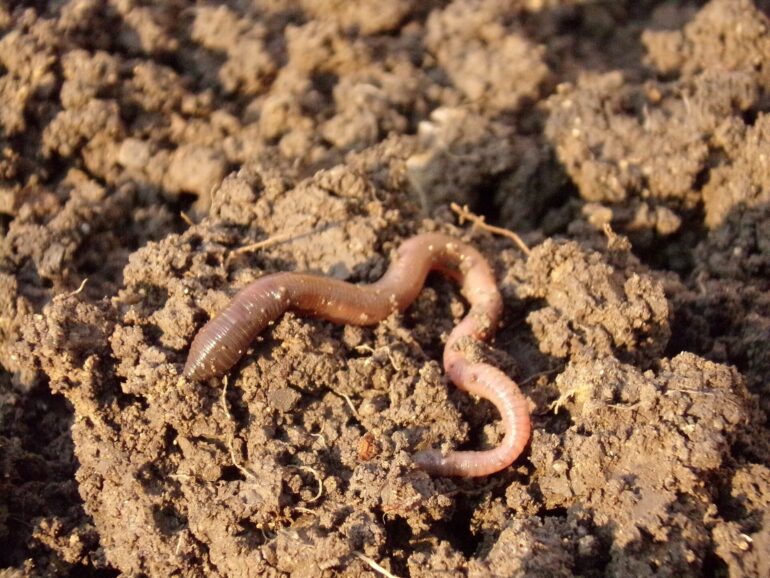Earthworms are a welcome sight for gardeners and farmers because the wriggling invertebrates recycle nutrients from soil, making them more accessible to plants. As worms burrow, they consume almost everything in their path, including microscopic plastic pollution. Now, researchers reporting in ACS’ Environmental Science & Technology have observed that earthworms actually prefer soil with some types of microplastics but digest the polymers differently, which the team suggests could impact the animals’ health and the ecosystem.
Soil is becoming increasingly contaminated by fragments of plastic—especially microplastics less than 5 mm wide—that have broken off of larger plastic waste or have been directly released from products as small particles. Previously, researchers have shown that earthworms will ingest these synthetic particles, even breaking them apart into smaller pieces. But during the digestion process, animals could potentially be harmed by the microplastics themselves or by the toxic substances they carry. Currently, companies are producing alternatives to petroleum-based plastics that are derived from plants, are biodegradable or both. Just like traditional plastics, these “bioplastics” can also fragment into microscopic particles, but there is limited information on whether earthworms will also ingest and decompose these materials. So, Lei Wang and colleagues wanted to compare the willingness of earthworms to consume soil laced with microscopic pieces of bioplastic and petroleum-derived plastic, studying the in vitro digestion and excretion of the particles.
By placing earthworms in chambers with different types of plastics in certain locations in the soil, the researchers found that worms preferred soils with bio-based polylactic acid (PLA) particles or petroleum-derived polyethylene terephthalate (PET) particles but actively avoided some semi-synthetic plastics. When lactic acid and terephthalic acid, sour-smelling monomers that make up PLA and PET, respectively, were spiked into soil, the worms were also attracted, suggesting that the animals were drawn in by the odors as potential cues for food. In another experiment, the researchers put earthworms in soil mixed with either microscopic PLA or PET particles. Analysis of the creatures’ excretions showed that their digestive systems broke down PLA into much smaller fragments than was observed with PET plastics. The animals also excreted PLA much more slowly. The researchers say the results show that earthworms can promote the breakdown of bioplastics, such as PLA, in soil. They add that more studies are needed to determine how the slow excretion of PLA fragments affects the health of these animals and whether the worms are an option to remove degradable plastics from the environment.
More information:
Earthworms’ degradable bioplastic diet of polylactic acid: Easy to break and slow to excrete, Environmental Science & Technology (2022). DOI: 10.1021/acs.est.1c08066
Provided by
American Chemical Society
Citation:
Earthworms like to eat some plastics, but side effects of their digestion are unclear (2022, April 6)
